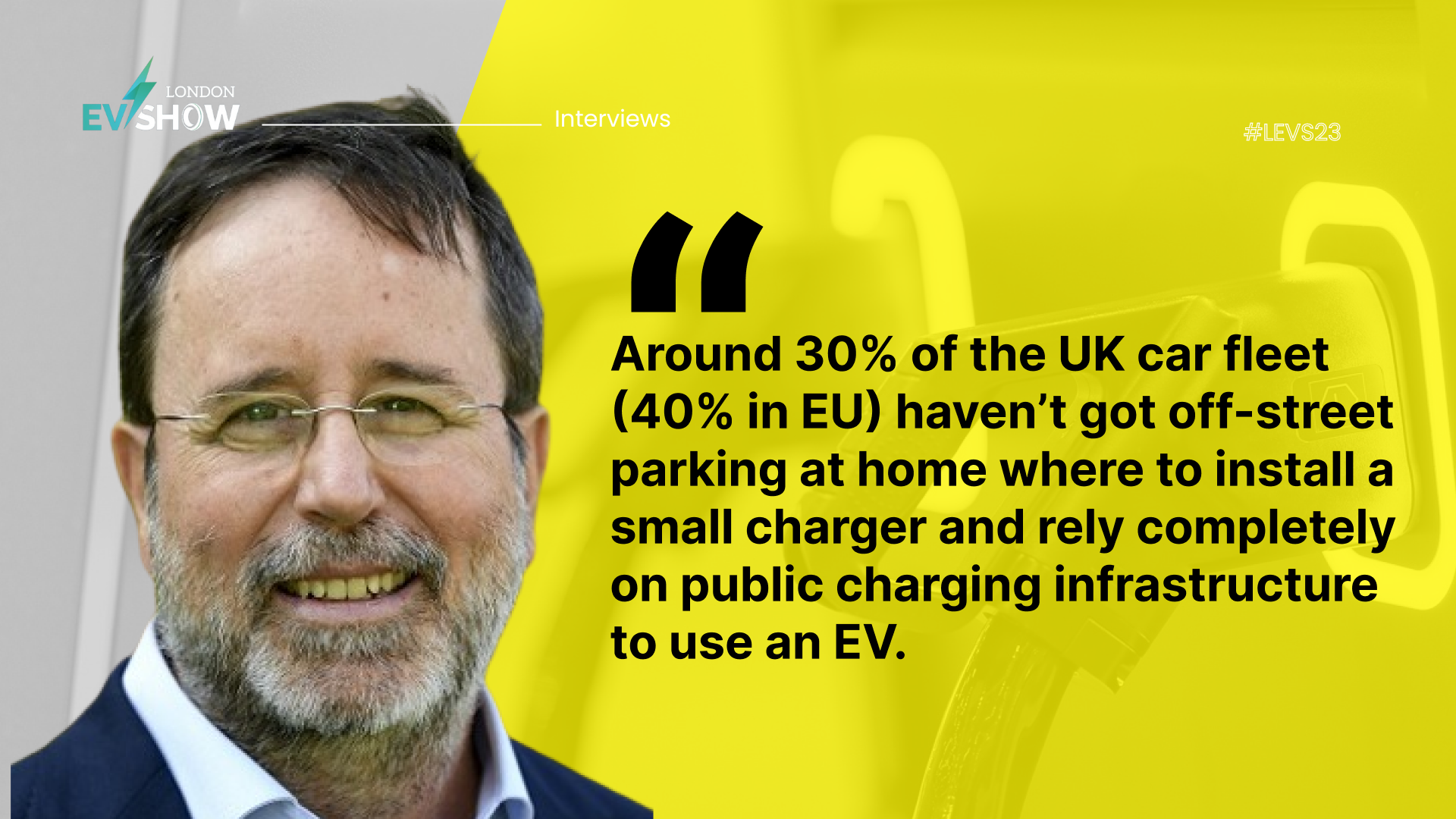In view of scarce off-street parking at home for installing home chargers, the owners heavily rely on public charging infrastructure to power their electric vehicles. In a recent Q&A session with Mr Diego Garcia Carvajal, Manager of the European Copper Institute, we delved into the topic of how to enhance EV charging infrastructure and the crucial role played by the institute in driving EV adoption.
Let us delve more into the highlights of our engaging Q&A session with Mr Diego
LEVS: What is the reason behind your interest and excitement in participating in the panel discussion titled Fast Charging vs. Slow Charging: Pros and Cons for the New Age of Electric Vehicles at the upcoming London EV Show?
Mr Diego: Let me introduce why we are very interested in our participation in the panel Fast charging vs. slow charging: Pros and cons for the new age of electric vehicles. Current electric passenger cars use between 2 and 3 times more copper than the equivalent combustion vehicles. In addition to the Copper used in the charging infrastructure and the renewable generation to feed those vehicles. Our major concern regarding the uptake of electric passenger cars is the deployment of the required urban public infrastructure by 2030. Around 30% of the UK car fleet (40% in EU) haven’t got off-street parking at home where to install a small charger and rely completely on public charging infrastructure to use an EV.
There are two main configurations: slow chargers at residential areas to somehow replicate the off-street use case or rapid hubs (50kW chargers on average) at commercial locations to recharge the weekly energy needs in about one hour. From a societal point of view, the best one is residential because the cost can be half of rapid hubs and the vehicle could provide many services to the grid. But there are no market incentives for it: charge point operators could get more revenues from rapid hubs and many local authorities don’t want or don’t know or don’t have resources or…
What’s on stake? Mainly, the affordability of EVs and, in the long term, to fully decarbonise the car fleet by 2050.
Main challenge? The lack of time to achieve the car decarbonization targets by 2030.
This concern is still not evident for many EV stakeholders and I hope that with this panel UK stakeholders increase the discussion on it to find an agreement of the configuration of the urban public charging infrastructure as sooner possible.”
LEVS: How is the increasing demand for EVs affecting the availability of batteries and accessibility of charging facilities?
In 2020, the British Government set the course to register only zero-emission cars and vans from 2035. And looking at the sales figures is clear that industry and society are following that course. In our view the biggest challenge won’t be battery supply but the deployment of the urban public infrastructure because of the number of points required and the tight time frame. Around 30% of the UK car fleet will only rely on urban public infrastructure to use an EV.
LEVS: How does the European Copper Institute collaborate with other stakeholders, such as battery manufacturers and EV manufacturers, to ensure the efficient and sustainable use of copper in the development of batteries and EV charging infrastructure?
Mr Diego: Regarding the electrification of road transport, our main goal is to accelerate the uptake of electric vehicles, light and heavy duty. Through the identification of the key European policies and advocating for the best provisions to accelerate the transition. We are also very active on some market initiatives to accelerate the assessment of the grid where battery trucks will be recharged. We are members of the Platform for Electromobility, European battery Alliance, European Clean Trucking Alliance and Road Freight Zero.
LEVS: What are the challenges and opportunities associated with use of copper in EV batteries and charging infrastructure?
Mr Diego: Copper is used as a current collector in the anode of the battery cells because of its electrical conductivity, and also thermal conductivity to extract heat from the interior of the cell. On average, an electric car uses between two and three times the Copper required in the equivalent combustion vehicle, around half in the battery pack.
LEVS: What factors should be considered while choosing between fast charging and slow charging facilities available and how is the use of copper helping it?
Mr. Diego: Although the range of EVs is growing significantly, it’s still relatively common during long journeys to have to stop once to recharge the vehicle. In these cases. the bigger the power of the charger the better to minimise the length of the stop. Very soon they’ll offer 350kw or even more.
However, in urban areas, we think that slow chargers at residential areas is the best solution. To have the chargers where the vehicles are parked for a long time offers the possibility to recharge the vehicle at the lowest price while the battery of the vehicle will be able to provide services to the grid and reduce the cost of electricity in general. With a bigger share of renewable generation, the benefits of slow charging will increase.
LEVS: How do events like the London EV Show contribute to the promotion of Electric Vehicles and the expansion of charging infrastructure?
Mr Diego: 2035 seems far away but it’s not, considering that all new cars will have to be zero-emission and the required charging infrastructure will have to be in place by that date. For this reason, EV events such as the London EV Show are very important to align and coordinate all EV stakeholders, private and public, to achieve these challenging goals. I really appreciated the invitation to this event and to have the opportunity to discuss with many stakeholders in one of the countries in Europe leading the transition to EVs.

